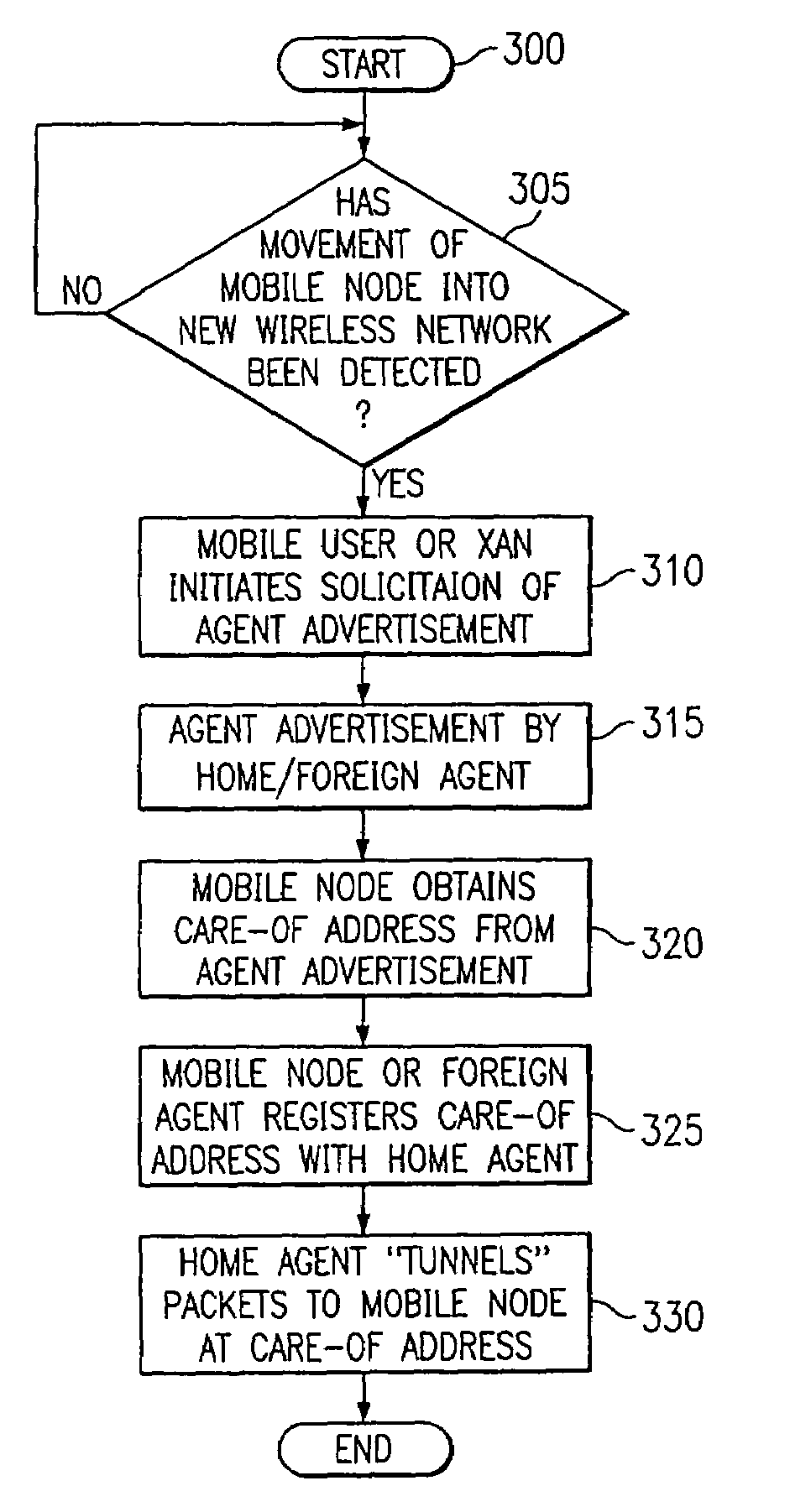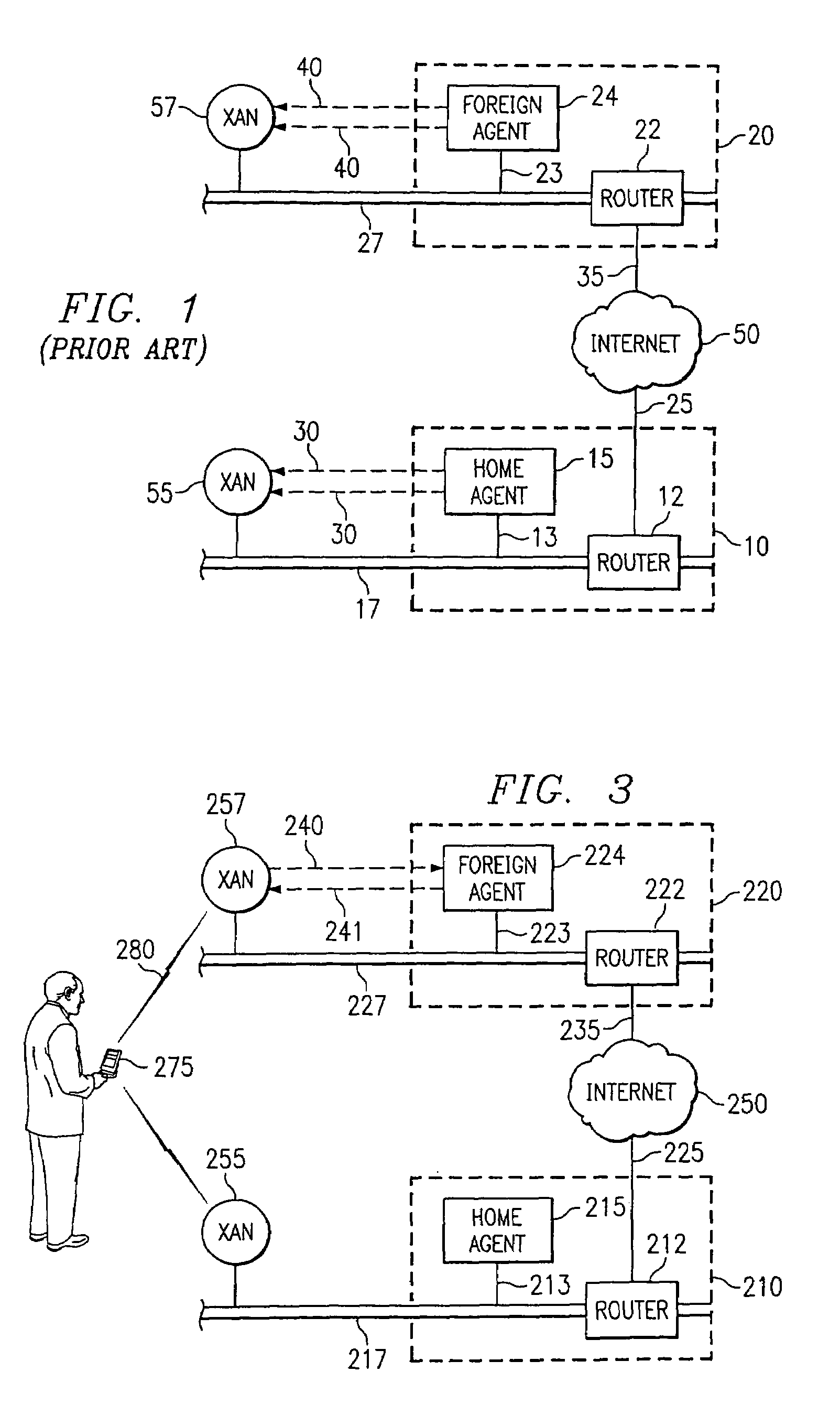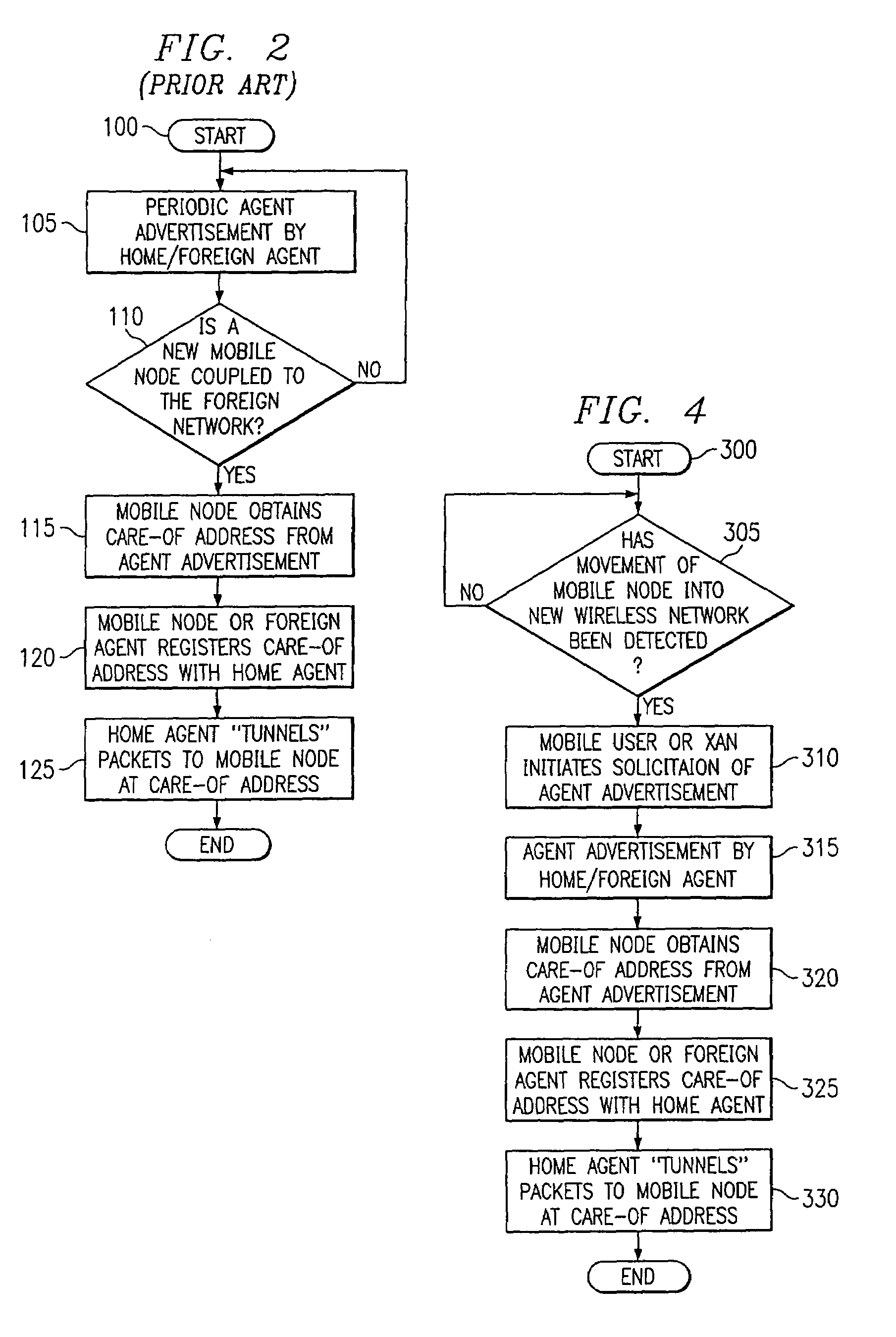Unicast agent advertisement based on layer 2 and layer 3 motion detection
a technology of motion detection and agent advertisement, applied in the field of internet protocol (ip) based mobile communication system, can solve the problems of single centralized system being vulnerable to missile attacks or sabotage, unable to communicate with the other military computers on the closed system, and not necessarily providing for increased data transmission reliability
- Summary
- Abstract
- Description
- Claims
- Application Information
AI Technical Summary
Benefits of technology
Problems solved by technology
Method used
Image
Examples
Embodiment Construction
[0051]Mobile IP protocols support the routing of data communications to mobile nodes on the Internet. In a mobile IP system, each mobile node is identified by a permanent IP address. While the mobile node is coupled to its home network, the mobile node functions as any other fixed node on that network. When the mobile node moves from its home network to a foreign network, however, the home network sends data communications to the mobile node by “tunneling” the communications to the foreign network where the mobile user is located.
[0052]A care-of address identifies the foreign network where the mobile node is located. Mobile IP protocols require that the mobile node register the care-of address with the Home Agent on the home network after movement to a new network. After registration, all communications addressed to the mobile node are still routed according to normal IP protocols to the mobile node's home network. After the Home Agent receives this communication, however, the Home ...
PUM
 Login to View More
Login to View More Abstract
Description
Claims
Application Information
 Login to View More
Login to View More - R&D
- Intellectual Property
- Life Sciences
- Materials
- Tech Scout
- Unparalleled Data Quality
- Higher Quality Content
- 60% Fewer Hallucinations
Browse by: Latest US Patents, China's latest patents, Technical Efficacy Thesaurus, Application Domain, Technology Topic, Popular Technical Reports.
© 2025 PatSnap. All rights reserved.Legal|Privacy policy|Modern Slavery Act Transparency Statement|Sitemap|About US| Contact US: help@patsnap.com



